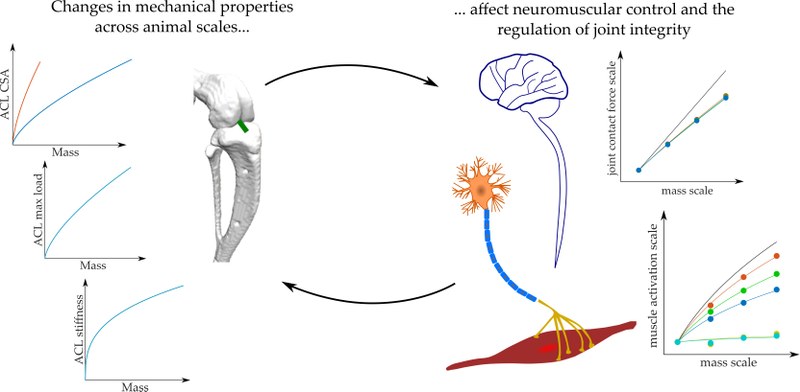How does the mechanical scale affect the neural control and the regulation of joint stability?
Mar 02, 2021
Recent work has demonstrated how the size of an animal can affect neural control strategies, showing that passive viscoelastic limb properties have a significant role in determining limb movements in small animals but are less important in large animals. We extend that work to consider the effects of mechanical scaling on the maintenance of joint integrity; i.e., the prevention of aberrant contact forces within joints that might lead to joint dislocation or cartilage degradation. We first performed a literature review to evaluate how properties of ligaments responsible for joint integrity scale with animal size. Then we analyzed how the neural control of joint stability is altered by body scale.
This work provides insights into how scale affects the regulation of joint integrity by both passive and active processes and provides directions for studies examining how this regulation might be accomplished by neural systems.
The complete article can be found through this link, published at the International Journal of Molecular Sciences, within the special issue of Neuronal Control of Locomotion. This work is framed within the collaboration of Gil Serrancolí (SIMMA Lab – LAM UPC) with the group of Dr. Matthew Tresch, from Northwestern University (Illinois, USA) and the CASA mobility grant obtained in 2020 to do a research stay at Northwestern University (Illinois, USA).

Share: